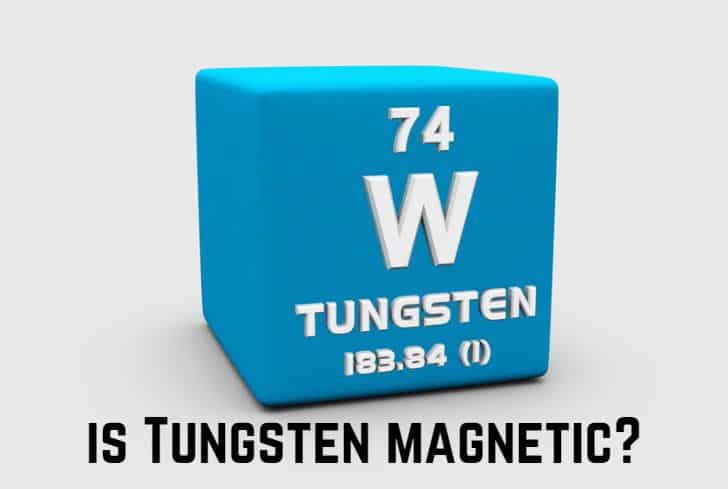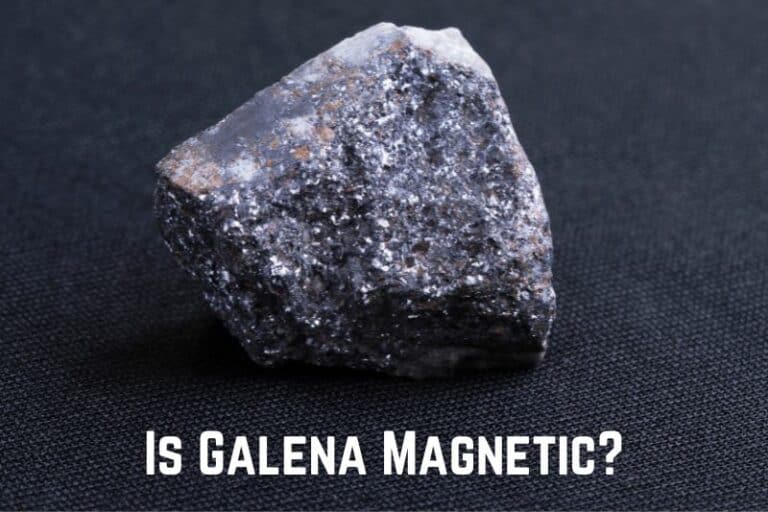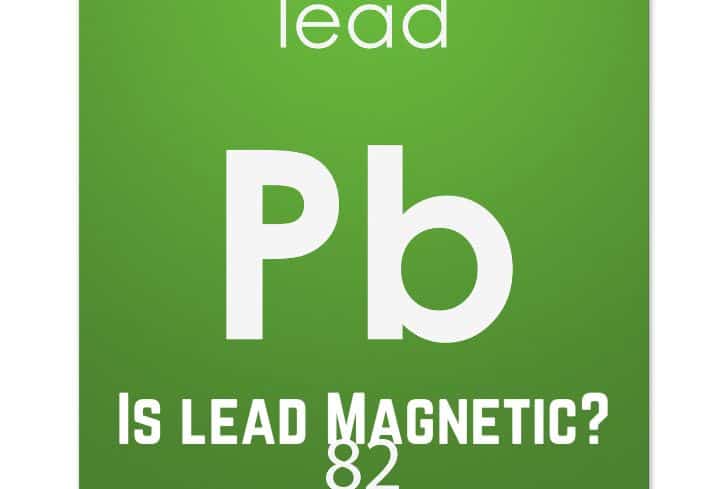Is Tungsten Magnetic? (No. It’s Not)

Tungsten (also known as wolfram) is a chemical element having atomic number 74. It is a rare metal found almost exclusively as compounds with other elements. Tungsten is a part of many alloys, which are used for filaments of bulbs, x-ray tubes, etc.
Have you ever wondered if tungsten is magnetic? In this article, we are going to discuss just that. We will begin with the properties and uses of tungsten. Then we will look at its magnetic properties in detail. We will also discuss alloys like tungsten carbide and tungsten steel.
Read: Is Cast Iron Magnetic?
Is Tungsten Magnetic?
No, tungsten is not magnetic under normal circumstances. Just like magnesium and aluminum, it is a paramagnetic material, which is weakly attracted to magnets. But being paramagnetic, tungsten does have unpaired electrons and some unaligned dipoles, which causes it to act like a weak magnet.
Let us first understand what magnetism is. Magnetism is a force caused by the motion of electric charges. Every substance is made up of atoms. These atoms have electrons (particles that carry an electric charge) that circle the atom’s center, called the nucleus.
In most substances, equal numbers of electrons spin in opposite directions. This cancels out their magnetism, and they are not attracted to a magnetic field. These include things like cloth, wood, paper etc. and are called diamagnetic.
However, in some substances like iron, the electrons spin in the same direction. This allows their magnetic fields to combine, and it produces a magnetic field extending beyond the atoms. These objects are strongly attracted to magnets and are called ferromagnetic.
Tungsten is a paramagnetic material, which has a composition similar to that of ferromagnetic materials. They have unpaired electrons in their partially filled energy orbitals. They also have some dipoles that are not aligned with the direction of the applied magnetic field.
The unaligned dipoles obstruct the magnetic fields created by the aligned dipoles, and because of this, paramagnetic materials are slightly attracted to external magnetic fields. Therefore, a paramagnetic material like tungsten behaves like a weak magnet.
Properties and Uses of Tungsten
These are the properties of Tungsten:
- The free element of tungsten is incredibly robust. It has the highest melting point of all known elements except carbon: 3,422 °C (6,192 °F). It also has the highest boiling point, 5,930 °C (10,706 °F).
- Tungsten is a very hard metal and is widely used in the steel industry. It is the strongest natural metal with 142,000 psi.
- It also has a high density of 19.30 grams per cubic centimeter, which is about 1.7 times that of lead, and comparable with that of gold and uranium.
- Tungsten is a hard material but is intrinsically brittle, which makes it difficult to work. But single-crystalline tungsten is more ductile and can be cut with a steel hacksaw.
- Tungsten is mostly non-reactive. It does not react with water or with oxygen at normal temperatures. However, at high temperatures, it can react with carbon and oxygen. It will dissolve in acids like nitric acid and hydrochloric acid.
These are the uses of Tungsten:
- Tungsten is mainly used in alloys, where it provides greater strength to steel and other metals. The aerospace and automotive industries mostly use tungsten alloys. Wear-resistant parts and turbine blades are made up of tungsten superalloys.
- Because of its high melting point, tungsten is used as a filament in bulbs and lamps. It is also used in X-ray tubes, electrodes in gas tungsten arc welding, and radiation shielding.
- Tungsten’s hardness and high density make it ideal for military applications, especially penetrating projectiles (ammunition designed to penetrate vehicle armor). Tungsten compounds are also used as industrial catalysts.
Tungsten is the only metal in the third transition series that exists in biomolecules; it is found in some species of bacteria and archaea. However, it interferes with metabolism and is therefore toxic to most animal forms.
Will a Magnet Attract Tungsten?
So, when tungsten is brought near a permanent magnet, it is weakly attracted. However, as soon as the magnetic field is removed, aluminum goes back to diamagnetism.
Is Tungsten Carbide Magnetic?
Yes, tungsten carbide is magnetic. This is because it generally uses cobalt or nickel as a binder, both of which are ferromagnetic metals, and they impart their magnetic properties to the alloy.
Tungsten carbide is a carbide (a kind of chemical compound) containing equal parts of tungsten and carbon atoms. In its basic form, tungsten carbide is a fine grey powder. It is mixed with another powdered metal like cobalt, pressed into the desired shape, and then heated at 1400-1600°C.
The other metal (cobalt) melts and partially dissolves the tungsten carbide grains, acting as a binder or cement. The final product is twice as stiff and dense as steel. Because of its incredible hardness, tungsten carbide is used in cutting tools, armour-piercing shells, jewellery, etc.
Cobalt is a ferromagnetic material. It has unpaired electrons in its outer shell, which align themselves in one direction, creating a strong magnetic field. So, cobalt is strongly attracted to magnets.
Since cobalt is a part of tungsten carbide, it imparts the same magnetic properties to the alloy.
Read: Is Nickel Magnetic?
Is Tungsten Steel Magnetic?
Yes, tungsten steel is magnetic. Tungsten steel is any steel that has tungsten as its alloying element. About 2-18% of tungsten along with small amounts of vanadium and molybdenum are used, which creates an alloy with incredible heat, corrosion, and wear resistance.
One of the oldest materials used for alloying steel is tungsten, which forms a very hard carbide. However, high tungsten content in the alloy can cause brittleness, making it prone to fracturing rather than bending. Tungsten steel is used for making micro-drill bits, rotary cutting blades, and rocket engine nozzles.
Steel is made up of iron and carbon, and it is usually magnetic because of the presence of iron. The same goes for tungsten steel, where iron imparts magnetic properties to the alloy.
Is Tungsten Detectable With a Metal Detector?
Yes, tungsten is detectable with a metal detector. Metal detectors can find all metals—even those which are non-magnetic—by a phenomenon known as the Lenz Effect. This is because non-magnetic metals still interact with a moving magnet.
Tungsten is a paramagnetic material, meaning that although it has unpaired electrons, it is weakly attracted to magnets.
Metal detectors can find all kinds of metals (even non-magnetic ones like silver and tungsten) by a principle known as the Lenz effect.
Moving the metal detector over a piece of tungsten will set up a slight electric field in the piece. The metal detector can sense this electric field and alert you about it. You can try this yourself by moving a magnet near a non-magnetic material, like a silver ingot.
The moving magnet sets up an electric current in the ingot. This electric current has a magnetic field of its own, and it is this magnetic field that interacts with the moving magnet. You can check out this excellent video by Magnets&Motors to see this in action.
So, while tungsten is itself not magnetic, it can still interact with a moving magnet, and that is how metal detectors can find it.
Is Tungsten a Good Conductor of Electricity?
Tungsten does not conduct electricity at normal temperatures. It can, however, become conducive at higher temperatures. Tungsten contains free electrons in its outer shell, but these are available for conduction only at higher temperatures.
Despite having free electrons, tungsten does not easily conduct electricity at normal temperatures. This is because it has high electrical resistivity. It restricts the movement of electrons at lower temperatures.
Tungsten becomes electrically conducive only when the temperature is 68°F (20°C) or higher. Tungsten also has a very high melting point, which is why it is used as a filament in lamps and bulbs.
Is Tungsten Stronger Than Titanium?
Tungsten and Titanium both have their respective strengths. Tungsten is the strongest natural metal with 142,000 psi. However, it is weak in terms of impact strength. It is brittle and can shatter easily on impact. On the other hand, titanium is much more resistant to impact, having a tensile strength of 63,000 psi.
Titanium is a chemical element having the atomic number 22. It is found only as an oxide, which can be reduced to get a lustrous transition metal that has high strength and is corrosion-resistant.
In terms of density, titanium beats tungsten. However, titanium has lesser compression strength, so its value on the Mohs Hardness Scale is much lower.
So, there is not a single indicator by which we can say that either tungsten or titanium is stronger. Each has its strengths and respective uses.
Read: Is Zinc Magnetic?
Conclusion
In this article, we have discussed the magnetism of tungsten. Tungsten is a paramagnetic material, meaning that, although it has free electrons in its outer shell, it is weakly attracted to magnets. We looked at the properties and uses of tungsten. Finally, we also saw how tungsten compares with titanium and discussed its alloys like tungsten steel.






![Is Chapstick Flammable? [Lip Balm, Lipstick, Lip Gloss]](https://eartheclipse.com/wp-content/uploads/2023/03/is-chapstick-flammable.jpg)